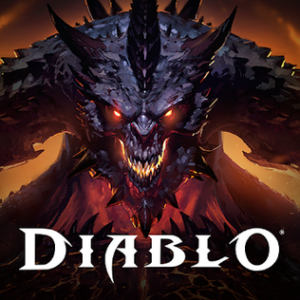Blizzard's ancient action RPG series has finally made its way to mobile, but there's something that's been lost in translation.
Diablo Immortal captures the charm and chaos of modern mobile gaming
Diablo Immortal review
An action-heavy RPG designed for iOS and Android (but also available on PC), Diablo Immortal represents Blizzard’s first stab at taking the fantasy franchise beyond the constrained co-op of the series’ usual formula into the strata of MMORPGs like World of Warcraft.
Set between the end of the second game in the series and the start of the third, Immortal may as well be Diablo 2.5. You create an avatar, choose from one of six classes, fight your way through hordes of demons and collect progressively more powerful gear along the way.
The plot here is a race against time against a new and vicious, but largely archetypal, villain who has stepped in to fill the power vacuum left by the most recent defeat of Diablo and the other Prime Evils. However, rather than a series of acts with escalating difficulty, specific environments and epic bosses, Immortal sees you crisscross the world of Sanctuary like never before.
One quest chain will see you wandering through the deserts of the east. The next will see you fighting pirates in a swamp. While it's undeniably cool to explore and immerse yourself in the series' dark fantasy world in a way that previous Diablo games didn't really allow for, the potency of the storytelling here does take something of a hit as a result.
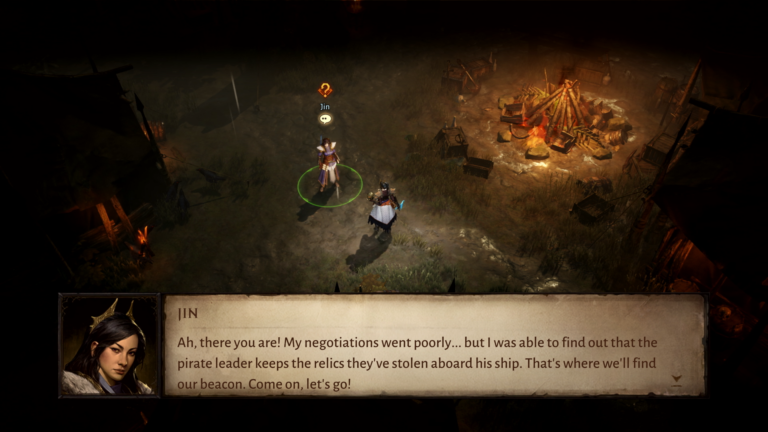
Even by the modest standards of storytelling in the previous Diablo games, the plot in Diablo Immortal is fragmented, frustratingly paced and hard to follow. Where Diablo 3 always kept your current narrative objective at arm's length, its mobile-centric follow-up can't help but fall into detours galore.
Adding to these problems, Immortal frequently assumes a level of familiarity with the world of Sanctuary that rarely feels earned. Characters from previous Diablo games are weaved into the plot with all the elegance of an MCU cameo. Even if you get the joke, the punchline rarely finds much of a landing.
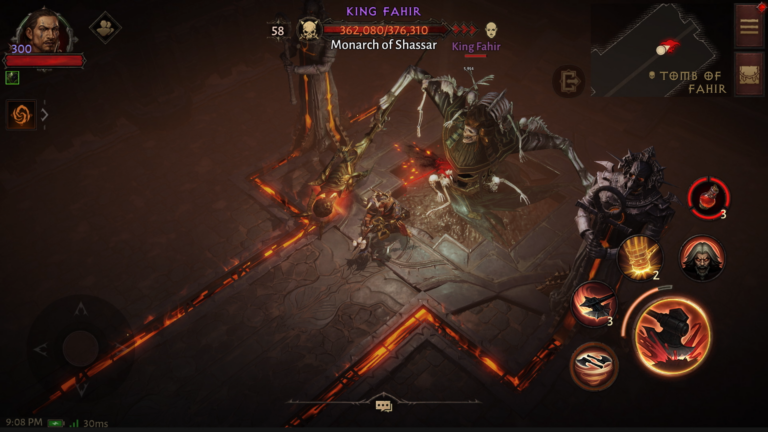
The jump to mobile for all of Blizzard’s franchises is something that many people, including myself, have anticipated for a long time, and Diablo’s streamlined gameplay loop and top-down perspective make it a more natural fit than either Warcraft or Starcraft.
The core gameplay here doesn’t have a lot of verbs to it, so squeezing it onto touch controls isn’t as much of an ask. You're tapping on enemies rather than clicking on them, but that substitution isn't nearly as significant as it might sound. The moment-to-moment gameplay in Diablo Immortal does a great job of looking, sounding and playing like that of other games in the iconic hack-and-slash series.
It's the structure stringing together your character's adventures that’s undergone the bulk of the tinkering.
Rather than randomly generated level layouts, Diablo Immortal mostly skews towards more hand-crafted levels. What's more, instead of letting you blitz through each zone and leave a trail of bodies in your wake on the way to the next, areas are locked to a certain minimum level.
You’ll usually be a few levels short of where you need to be by the time you finish the main story content in each location, which means you’ll have a few hours of busy work before you move on. This gives you a little time to get to know each of Diablo Immortal's locales, lending them a more open feel that’s readily akin to something like the destinations in Destiny 2.
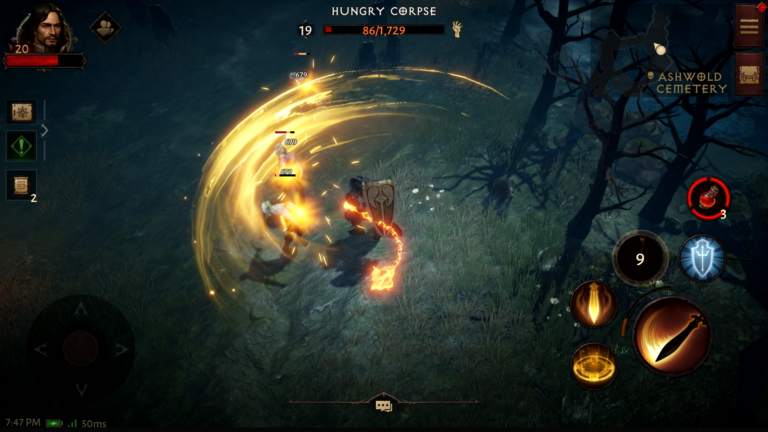
This isn't the only aspect of Diablo Immortal that reminded me of Bungie's science fiction shooter. The loot grind in Blizzard's mobile RPG (at least as it has been calibrated at launch) feels like it has a lot in common with Destiny’s own drip-feed approach to character progression. Even on higher difficulties and against the toughest bosses, getting a nice piece of loot always felt frustratingly infrequent.
A stark contrast to earlier instalments, the levelling curve here in Diablo Immortal is very much baked into the game's monetisation systems, specifically the battle pass.
Complete enough activities, from Strike-like dungeons to bounties to PVP battlegrounds, and you’ll get a healthy bump upwards on your experience bar. If you run out of things to do, come back tomorrow and the game will serve you up a whole new slate of stuff to clear.
As someone who plays a lot of mobile games, something that always keeps me coming back (and ultimately spending money), is a sense of generosity. Unfortunately, there’s nothing that feels particularly generous about the way that Diablo Immortal has been monetised.
Love it or hate it, Blizzard’s approach to monetisation in Hearthstone and Overwatch has something like an industry standard for genres like the digital card game and hero shooter. There’s nothing quite as distinct, original or even approachable in Diablo’s first foray into mobile gaming. And don’t get me wrong, there is a lot here.
Diablo Immortal’s in-game shop has everything, from cosmetics to currency bundles to boosters to gems and crafting materials. The game stops short of letting you buy experience, but only just. It’s a real shotgun approach to monetisation that feels designed to confuse you into spending money on something.
Again, as someone who plays a lot of mobile games, I usually have a pretty high tolerance for this kind of stuff. Nevertheless and multiple times during my initial playthrough of Diablo Immortal, I was sorely tempted to put down my phone and jump back into Diablo 3 just to not deal with any of it.
You don’t really have to pay to get the best items, but paying for certain consumables does increase your chances of getting those items (as well as your capacity to make them better via the crafting system). This might sound marginal and niche, but the devil is in the details when it comes to the endgame of any loot game like this one. I wouldn't say that the monetisation here got in the way of me having fun with the game, but it was something that I felt worse and worse about the more I came to understand it.
Diablo Immortal is entirely free to download and play but monetised through a number of different micro-transaction mechanisms.
The first of these is the in-game battle pass. As with battle passes seen in games like Fortnite, Diablo Immortal's battle pass has a free tier, a paid tier (currently priced at AU$7.99) and a premium tier (currently priced at AU$22.99). As you complete the pass, you earn rewards that vary from items to crafting material to in-game currencies. The higher tier of your pass, the more each level of the pass yields.
While some parts of Diablo Immortal's in-game shop (such as the battle pass) feature list prices in traditional currency, many are paid for in Eternal Orbs. This currency can be purchased in bulk via the store through a number of bundles:
- 60 Eternal Orbs for $1.49
- 315 Eternal Orbs for $7.99
- 630 Eternal Orbs for $14.99
- 1650 Eternal Orbs for $38.99
- 3450 Eternal Orbs for $79.99
- 7200 Eternal Orbs for $159.99
Cosmetic unlocks (also known as skins) are available for your character in Diablo Immortal and priced in Eternal Orbs. Most skins start at 1000 Eternal Orbs (approximately $25), but some go up to 1650 Eternal Orbs.
Crests are more uniquely tied to the overall design of Diablo Immortal. These are one-use consumables that add in-game modifiers to a single Elder Rift and increase the chances of getting a legendary gem from that run into a guarantee.
Eternal Legendary Crests can be bought piecemeal for 160 Eternal Orbs (approximately $4.50) or in a ten-pack for 1600 Eternal Orbs (approximately $38.99).
Another thing that can be bought using Eternal Orbs is crafting materials. Some of these are on the cheaper side of things at 100 Eternal Orbs and are used to re-roll the modifiers on select items. Others are more expensive, and required to unlock the full potential of the best items in the game at 1000 Eternal Orbs.
The last thing that can currently be bought is Platinum. This "semi-premium" currency can be spent on Crests and Crafting Materials through select in-game vendors. It is also required to buy things through the in-game auction house. Platinum is currently available in three bundles:
- 500 Platinum for 50 Eternal Orbs
- 5000 Platinum for 500 Eternal Orbs
- 50,000 Platinum for 5000 Eternal Orbs
The in-game store in Diablo Immortal also features a number of bundles that each include a combination of orbs, cosmetics, crafting materials and crests. These vary in price, going from as little as $1.49 to as much as $79.99. Some of these bundles can only be bought once per week, others are gated behind certain story milestones such as completing a certain dungeon or boss.
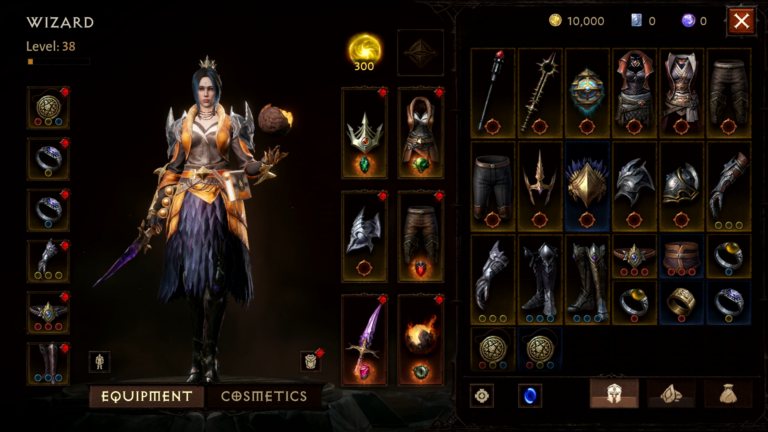
After a dozen hours with the game, I'm similarly lukewarm on Diablo Immortal's sprawling menu of MMORPG-style side activities. Where earlier incarnations of Blizzard's gothic hack-and-slasher have kept things relatively lean, the sheer amount of stuff in this one is exhausting to list and, frankly, overwhelming to see listed.
Beyond just the main storyline and the pursuit of better loot, there are Elder Rifts, Challenge Rifts, crafting, gem socketing, PVP battlegrounds, a competitive faction system called the Aeon of Strife, an in-game auction house, a Pokedex-style monster collecting mechanic, 8-player raids and more.
All of these flow towards progressing or enhancing one aspect of your character or another, but they all come across as very disconnected and siloed. It feels like what's here is here because Blizzard and Netease are worried you getting bored with the game or running out of things to do rather than because these mechanics add something meaningful to the experience.
Even if none of the above ever directly gets in the way, I found myself feeling like I had to engage with it just to play through the main story at something closer to my own pace rather than waiting on in-game activities to reset.
Frustratingly, most of the more traditional side quest content in the game and access to higher difficulty settings aren’t unlocked until you’ve reached the level cap in Immortal. This means that the road to that level cap can often feel like a grind, but it means there’s a lot to do once you get there. The idea that the real game only starts once you’ve hit the endgame feels as true here as it does with previous Diablo games.
Mobile games aren’t all alike, but some of the best ones are masters in the art of approximation. Recreating the gameplay experience with perfect technical accuracy isn’t the trick. Getting close enough that most players don’t care about the corners you’ve cut along the way is.
League of Legends: Wild Rift and Call of Duty Mobile are great examples of this. They aren’t faithful ports of their big-screen counterparts. Instead, they’re more nimble and lean. They embrace the fantasy of playing those games in short, bite-sized chunks, so long as you don’t sweat the details.
In that respect, Diablo Immortal does a great job of approximating the experience of playing a Diablo game. However, once it goes beyond that purview, the experience inevitably begins to feel a little too big for a screen this small.
Is Diablo Immortal worth the download?
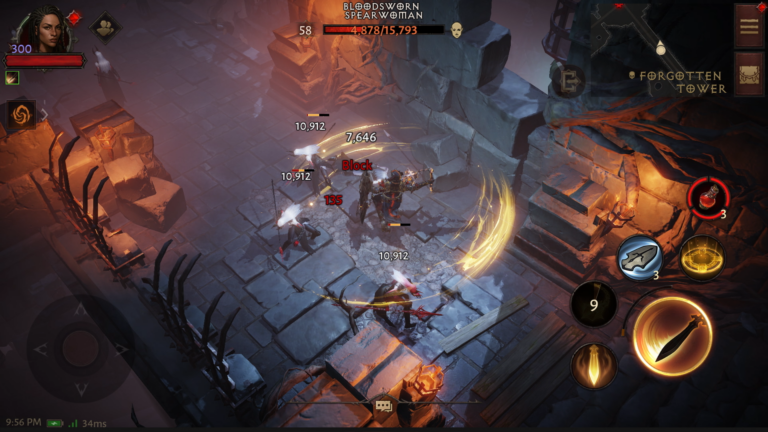
Diablo Immortal has been dogged by high expectations throughout its entire development, I don’t know if the final product quite achieves the consistency or velocity it needs to break free.
Being a new Diablo game brings a lot of baggage to the table, and Immortal adds to that by being the first mobile instalment, the first to go full MMO and the first to be free-to-play. Blizzard’s overall success at navigating the challenges inherent in each of these transitions varies widely.
After playing through the game’s base campaign over a weekend, I can’t help but feel like a more narrow scope would have benefited the final product. As it is, the dues that Immortal can’t help but try to pay to each of these obligations add up quickly and leave little room for anything else.
Diablo Immortal is too good to be called bad, but it’s too bad it can’t rise above the vortex of expectations that it’s been carrying around since it was met with moans rather than applause.
Related Articles


